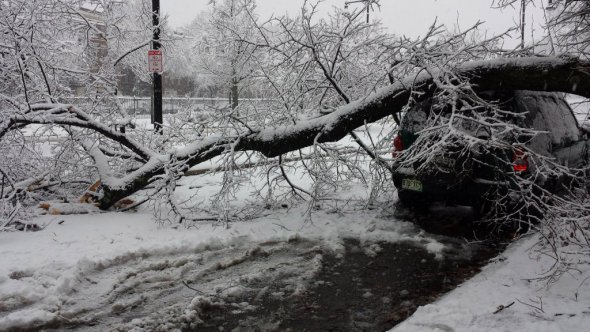Trim dead tree limbs

Dead limbs are more likely to fall during winter storms, making them a potential safety hazard. Have an arborist inspect and trim large trees.
we strongly suggest the Three-Step Approach to cutting tree limbs!
Step one: Make the first cut about one or two feet out from the tree trunk. This cut starts on the underside of the limb and goes into it, but only about a third of the way. This is a very important step in the process.
Step two: Make the second cut is outside of the first cut another foot or two. Make this cut all the way through the branch. The branch is likely to break away as you saw your way through the limb. Because you’ve already made the first cut on the underside and closer in, the bark will not continue to tear down into the tree trunk.
Without the first cut, as the branch breaks away from the weight of the limb, the attached and uncut bark goes with it, tearing it from the tree as well. This creates a big potential problem, allowing a large open wound and entry point for pests and diseases.
Step three: The final cut is right at the branch collar where the branch meets the trunk. Look for the flared area here. Make the final cut so that the flair is still apparent afterward. If cut properly, this flair will heal over and eventually fill in with new bark and scar tissue. You’ll know the tree is healing properly when you notice what looks like a doughnut forming where you made the cut.
Timing
The best time to remove tree branches and limbs is in late fall through late winter. Disease pathogens are inactive and therefore not a serious risk of damaging your trees. However, a fresh cut or wound during the warmer months can be an easy entry point for diseases and pests.
If you don’t have the equipment or don’t feel comfortable we would be more than happy to make a recommendation for a tree company to help you get rid of dangerous branches or trees.
